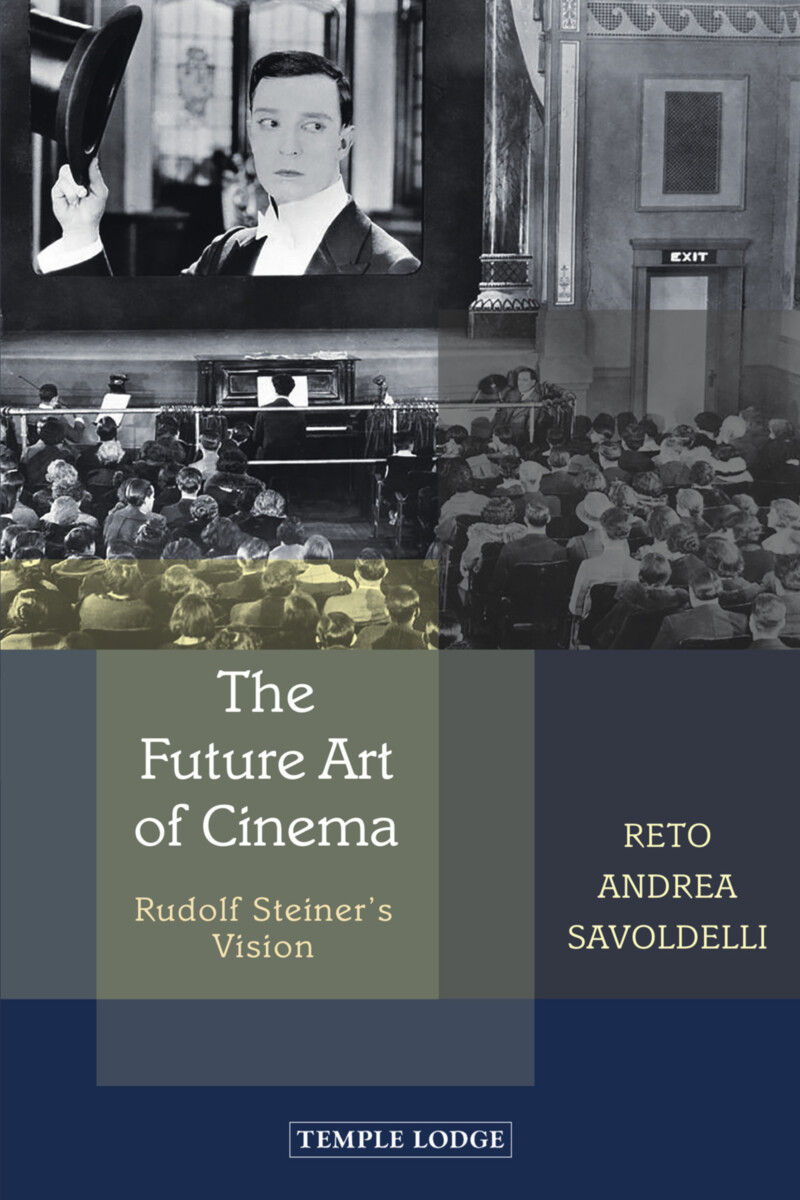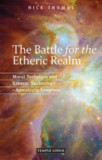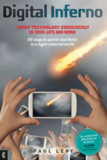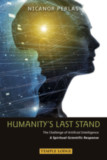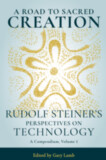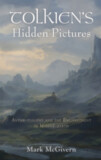The Future Art of Cinema
Rudolf Steiner’s Vision
- Publisher
Temple Lodge Publishing - Published
4th August 2020 - ISBN 9781912230402
- Language English
- Pages 164 pp.
- Size 6" x 9"
From Joseph Vogelsang and his mysterious peep-box to Hollywood blockbusters and Netflix, Reto Andrea Savoldelli’s survey of cinema and film is based on practical experience (he was once the enfant terrible of Swiss cinema) and years of contemplation and study. He examines the difference between film as the “hypnotic monster” mentioned by the Italian director Pier Paolo Pasolini and the art of film to which Rudolf Steiner aspired. The author discusses the historical development of cinema from its origins, focusing particularly on science fiction (from Star Wars to The Matrix) and influential filmmakers such as Eric Rohmer, Andrei Tarkovsky, and Pasolini.
As a scholar of Anthroposophy, Savoldelli provides a comprehensive assessment of Rudolf Steiner’s attitude toward film. In addition to frequenting the silent cinema of his time, Steiner commented several times on the newly introduced artform in lectures, letters, and private discussions. The author examines and interprets those statements and complements them with commentary on Steiner’s attempt to produce a film on the theme of reincarnation and karma, as well as his explorations with Jan Stuten of “light-show art.”
Other topics in this penetrating study include:
• Basic philosophical perspectives during the beginning of media studies;
• Steiner’s warnings about a technocratic form of civilization that will destroy humanity;
• Nostalgia for the art-house cinema that emerged in the ’60s;
• The proposed film based on Rudolf Steiner’s Fifth Gospel.
Anyone interested in the cinematic arts will find a treasure of stimulating ideas and new thinking in this unique book.
Includes eight pages of color plates.
C O N T E N T S:
Prologue
Joseph Vogelsang and His Mysterious Peep-box
The Peep-box and the Author
The Verena Gorge Hermitage in Solothurn
1. The Origins of Cinema
Turbulence and Shock in the Era of Its Emergence
“Seeing but not Seeing, Hearing but not Hearing”
Speaking in Parables
2. Rudolf Steiner at the Cinema
The Cinema Boom in Berlin
3. The Battle against Empirical Psychology
Franz Brentano and B. F. Skinner
Behaviorism as Theoretical Basis for the Film Industry’s Manipulation Techniques
An Art Therapy Prophecy
4. Basic Philosophical Stances in the Pioneer Period of Media Studies
From Béla Balázs to Siegfried Kracauer
Moral and Aesthetic Concerns
Franz Kafka, Edvard Munch
On Visiting a Monet Exhibitioin
Distances and Close-up: Two Forms of Cinema’s Fascination
The Film Pioneers Lumiére and Méliès
5. Rudolf Steiner, in a Lecture on 27 February 1917 in Berlin
Understanding Steiner’s Phrase “Becoming Etherically Saucer-eyed”
The Function of Illusion between Being and Nothingness
“Good” and “Bad” Illusion
Michael Ende on Steiner’s View of Film
Rudolf Steiner in Stuttgart, 11 July, 1923
Understanding the “Addiction to Reality”
The Spiritual View of P. P. Pasolini
The Psychological Norms of Film Heroes
The Propensity for Psychopathology in Genre Cinema
Addiction and Therapy
How Could a Possible Art of Cinema Contribute to the “Aesthetic Education of Man” (Schiller)?
6. Rudolf Steiner’s Attempt to Produce a Film on the Theme of Reincarnation and Karma
His Alarming Prophecies if the “Addiction to Sense Reality” is not Balanced by Spiritual Efforts
The Author’s Intentions in Correspondence with Those of Rudolf Steiner
The Film Project, You Don’t Step Twice in the Same River (1973) and Its 30-year History
7. The “Light-show Art” that Rudolf Steiner Explored with Jan Stuten
The Expansion of Spatial Configuration by Mechanically Supported Light-space Motion
The Project “Fear”
Its Connection with Film
Use of Stuten’s Preparatory Work in Wald Disney’s Film Fantasia (1940)
8. The Facutal Basis for J. E. Zylmans van Emmichoven’s Letter
Five Founding Considerations for an Art of Cinema as Proposed by Steiner
a) Retaining Critical Self-examination
b) The Quest for Genuinely Artistic Means of Cinematic Expression
c) The Mystery Plays by Steiner and Their Break with Theatrical Convention
d) Cinema’s Naturalistic Reproduction in the Service of a Spiritualization of the Art of Film
e) A Spiritual Foundation for This: The Legacy of the Last Three Leading Thoughts by Steiner
9. Steiner’s Prophetic Warnings about a Technocratic Form of Civilization
Perceiving the Evolutionary Conditions of the Human Spirit
A Look at Seven Science-fiction films from The Matrix to Star Wars
Transhumanism as an Ahrimanic Inspiration
The “Anthroposophic” Background to the Star Wars Universe
10. Nostalgia for the Art-house Cinema that emerged in the ’60s
Film Theory Contributions from Several Filmmakers
Is There a Language of Cinema?
How Does Spirit Infuse Film if the Viewer Remains Passive?
The “nouvelle vague” versus Russian Cinema
Return to Genealogy of Cinema in the Contrast between Lumièfe and Méliès
11. The Contributions of Three Film Directors
A Detailed Commentary on This
12. The Project discussed by Alexander Kluge and Andrei Tarkovsky for a film based on Steiner’s “From the Akashic Records”
Film Theory Issues Arising from This
13. Steiner’s Film Project as the Basis for Spiritualizing Film and the Art of Cinema
Substantiation
The Increasing Differentiation between Film Production and Forms of Distribution
Niche Cinema or Popular Films for a Mass Audience?
The Gradual Emergence of Sub-nature
The Evolutionary Danger Arising Here and Overcoming It
On the Creation of the Thinking Gaze by the “Reining in” of Thinking
On the Raising of Individual Will into Awareness
Epilogue (Fictional): Vogelsang’s Return
AppendixNotes and References
Reto Andrea Savoldelli
Reto Andrea Savoldelli was born in Solothurn, Switzerland in 1949. He is a director and actor, best known for his films Stella da Falla (1972) and Lydia (1969). In his early years he was celebrated as a top talent of auteur film, having been commissioned by Swiss television to make a film (Lydia, for which he had written the screenplay. At the age of twenty-two, his film Stella da Falla was the official Swiss entry to the Locarno Film Festival. He trained in Eurythmy under Elena Zuccoli at the Goetheanum in Dornach, Swizerland. From 1981, he developed Gideon Spicker Verlag, where he was responsible for publishing Herbert Witzenmann’s writings. Today he heads Das Seminar–Sozialästhetische Schulungsstätte, in Basel, founded by Witzenmann in 1973. Having co-founded the Solothurn Steiner school, he later taught seven different subjects in the Basel public school. He is the father of three daughters.


